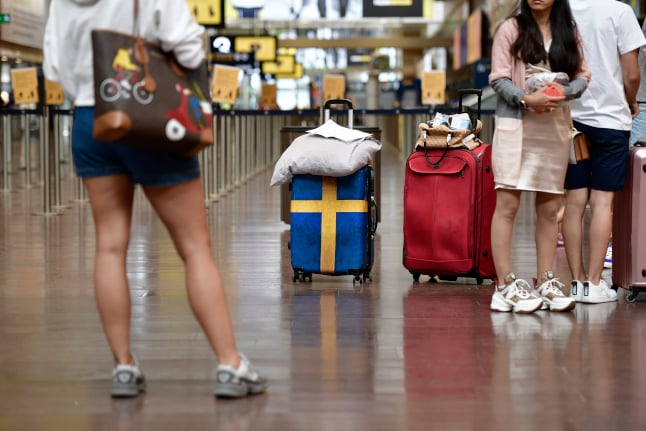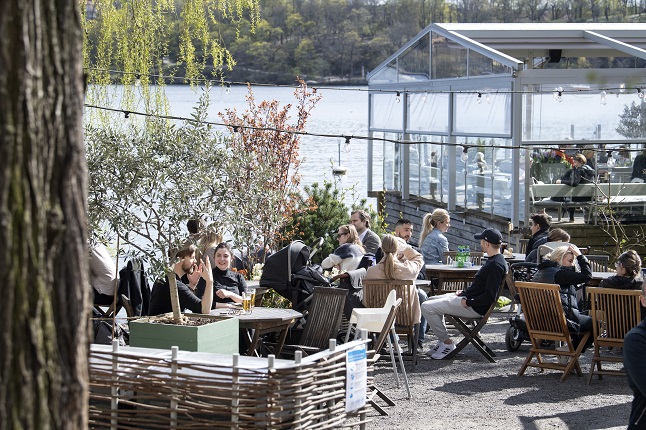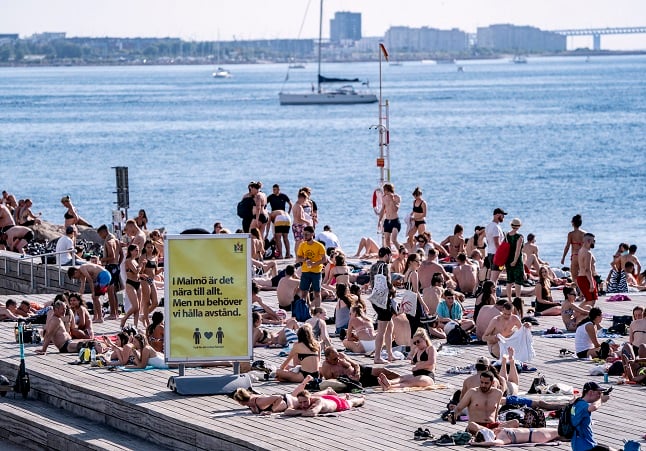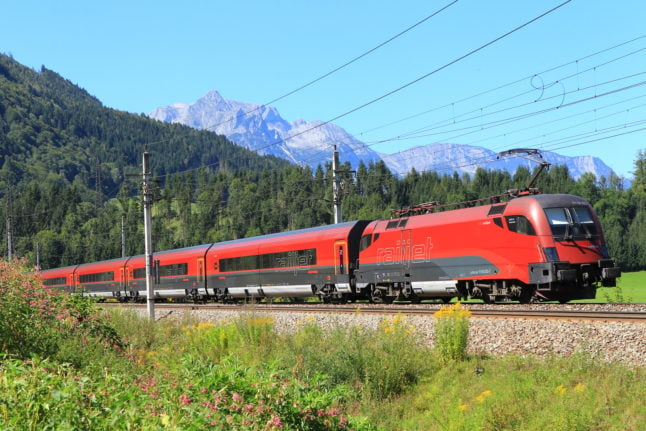With one of the highest infection rates in the EU, it's important that visitors and residents in Sweden continue to follow the recommendations in place, both to protect yourself and others.
Bear in mind that some establishments may have introduced additional measures such as asking guests to use hand disinfectant, queue outdoors, or wear gloves, so make sure to check for any information posters.
At the airport
Ten of Sweden's airports recommend wearing face masks while inside the terminal. They are: Arlanda, Landvetter, Bromma, Malmö, Luleå, Umeå, Åre, Visby, Ronneby and Kiruna.
These airports also recommend that passengers who are being seen off or greeted arrange to do that outside the terminal, to reduce the spread of infection, and passengers are encouraged to check in online in advance and use self-service machines for baggage and boarding.
There's no requirement to take a coronavirus test or bring a health certificate if you travel to Sweden, and measures like temperature checks aren't being carried out at airports. However, there is still a ban on entry to travellers from many non-EU countries, so you should of course make sure you'll be allowed to enter before planning or embarking on a trip.

Photo: Stina Stjernkvist/TT
Travel responsibly
There is no guidance against domestic travel, meaning you can travel freely around the country as long as you do it safely. Everyone in Sweden is asked to avoid public transport in the first instance if that's possible, meaning carrying out journeys by car, bike, or other means if you can.
If you have to use public transport, non-essential journeys should be carried out using methods of transport where you can book a seat if possible, and outside rush hour.
Several regions have apps or services online which allow you to check how busy different routes are, to help you plan your journey.
Face masks aren't compulsory on public transport in Sweden, although guidelines may change.
Social distancing
Whether indoors or outdoors, you should keep your distance from people outside your household or immediate circle.
Sweden hasn't specified an exact recommended distance, with the guidelines varying from “an arm's length” to two metres, but some venues or cities may have introduced their own guidelines. For example, regional authorities in Stockholm ask everyone to keep two metres apart in public places such as parks, beaches, and so on.
Many other venues, such as museums, have also reduced the number of visitors they are accepting, and even some parks and nature reserves have warned of crowding. So make sure you look into any rules before you head on a day out, leave if the location is crowded, and be aware while you're there.
At restaurants and bars
These venues have their own specific rules, with managers responsible for ensuring one metre's distance between different groups. As a customer, you have responsibility for keeping that distance, not rearranging furniture in a way that makes this harder, and not entering a crowded spot.
Bear in mind also that only table service is permitted at Swedish bars and restaurants, so don't crowd at the bar.

A restaurant and bar by the waterside in Stockholm. Photo: Jessica Gow/TT
Limit your contacts and avoid large social gatherings
Again, the actual recommendations are fairly loose, apart from a nationwide ban on public events of over 50 people. Unlike many countries, there's no fixed number of individuals or households that are allowed to meet, but the authorities do recommend limiting your social contacts.
That means only meeting a small group of the same people, avoiding larger events including weddings and parties, and keeping your distance from people outside your usual small social circle.

People crowd at a central swimming spot in Malmö. Photo: Johan Nilsson/TT
Socialising safely
If you're travelling to Sweden to meet friends or family, here are the Public Health Agency's guidelines on meeting others:
-
Only meet if everyone is symptom-free
-
Meet outdoors if you can
-
Keep around an arm's length distance from everyone who isn't in your household
-
Meet only in small groups (no specified number)
- Maintain good hand hygiene, including making it the first thing you do when you go indoors
Stay at home if you have symptoms
This is one of the guidelines that the Swedish authorities have stressed the most. If you experience any symptoms consistent with the coronavirus, you should not travel in the first place, and if you develop symptoms while in Sweden you should stay inside your accommodation and avoid social contacts. Under Swedish guidelines, you should do this until you have been symptom-free for at least two days.
This guidance may change, depending on how the situation in Sweden develops. Some helpful English-language resources on the coronavirus in Sweden besides The Local are the Public Health Agency and KrisInformation.



 Please whitelist us to continue reading.
Please whitelist us to continue reading.
Member comments